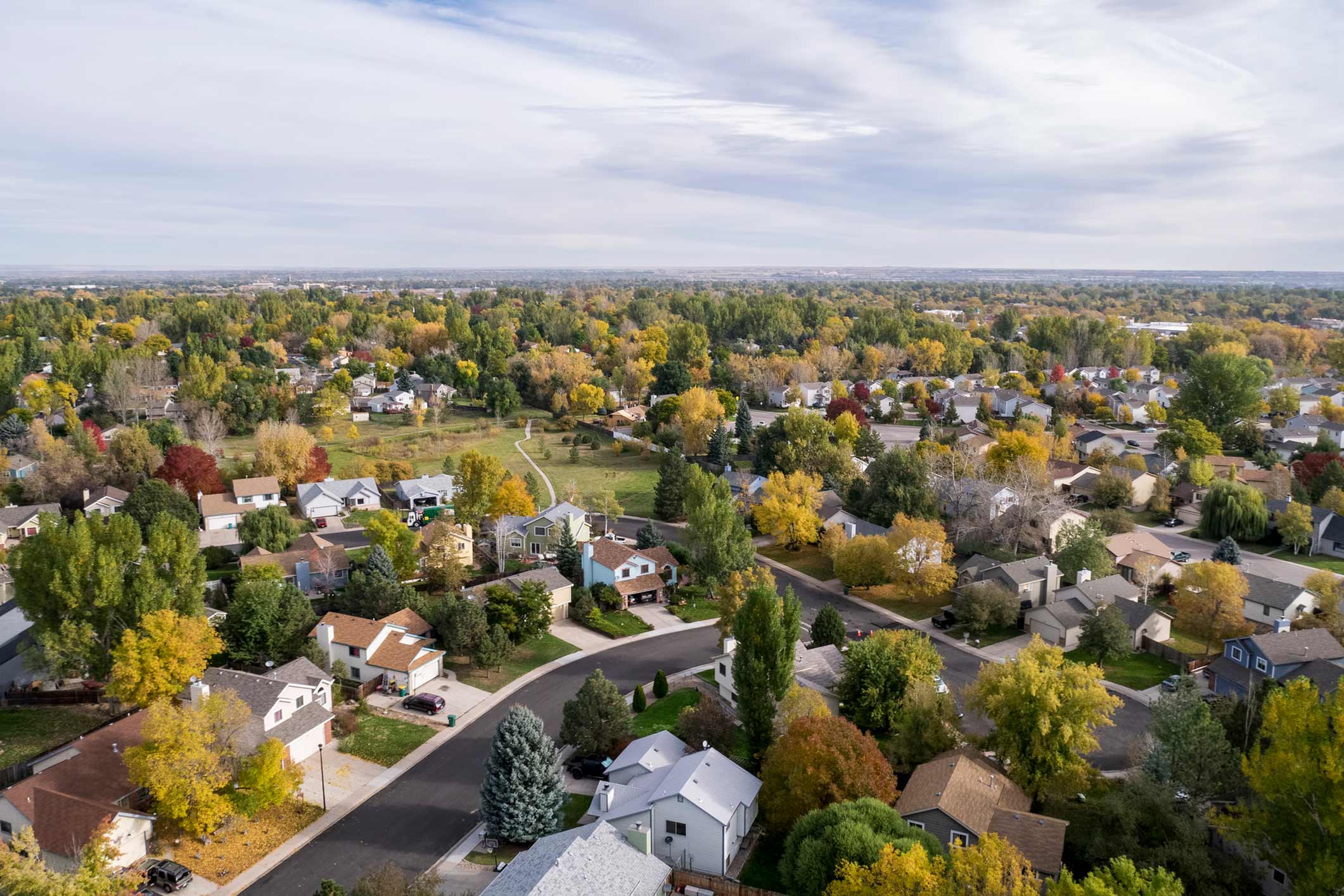
- Home
- Frequently Asked Questions
- Homebuyer Frequently Asked Questions

Homebuyer Frequently Asked Questions
Find quick answers to common questions about buying a home.
An annual percentage rate (APR) is the effective percentage you pay for your mortgage each year when certain costs and fees are included. That means the APR is usually higher than your regular interest rate because, in addition to interest, it includes lender or broker fees, points paid, closing costs, and other fees. In other words, APR is the cost to borrow money as a yearly percentage.
Different lenders may offer the same interest rate but the APR could differ because of varying fees and costs. It’s important to compare both rates.
An interest rate is the cost you will pay a lender to borrow money, expressed as a percentage. An annual percentage rate (APR) is the effective percentage you pay for your mortgage each year when certain costs and fees are included. Your APR is usually higher than your regular interest rate because, in addition to interest, it includes costs like lender or broker fees, points paid, closing costs, and other fees.
Private mortgage insurance (PMI or MI) is mortgage insurance that’s usually required with a conventional loan if your down payment is less than 20% of the home’s purchase price. PMI is also usually required for refinancing a conventional loan when your equity is less than 20% of the home’s value. PMI covers the increased risk when a borrower makes a smaller down payment or has less equity. It protects the lender — not you, the borrower — if you stop making loan payments.
Generally, PMI can be removed from your monthly payments once you pay down your loan balance to below 80% of your home’s purchase price or when you achieve 20% equity in your home.
Most government loans, such as FHA loans, also require mortgage insurance, typically for the entire life of the loan.
PMI is calculated as a percentage of your loan amount, typically from 0.2% to 2% annually. The cost of PMI depends on several factors, including your down payment amount, your credit score, your loan amount, and the type of mortgage loan.
Generally, PMI can be removed from your monthly payments once you pay down your loan balance to below 80% of your home’s purchase price or when you achieve 20% equity in your home.
Mortgage insurance protects the lender against losses if a homeowner defaults on a mortgage loan. Government mortgage insurance is required on government loans (such as FHA and USDA loans), and private mortgage insurance (PMI) is required on conventional loans if a homeowner’s down payment is less than 20% of the purchase price.
Mortgage insurance premiums are paid by a homeowner at closing or with each monthly payment. Premiums are paid to FHA for government loans and to private mortgage insurers for conventional loans.
Mortgage insurance protects the lender against losses if a homeowner defaults on a mortgage loan.
Mortgage insurance costs depend on several factors. For a conventional loan, private mortgage insurance (PMI) costs typically range from 0.2% to 2% of the loan amount per year. PMI costs are based on factors like the type of loan you get, your credit score, your down payment or amount of equity, and loan term. For an FHA loan, the up-front portion of the mortgage insurance premium is usually 1.75% of the loan amount, and the monthly payments are based on an annual premium of 0.50% to 0.55% of the loan amount.
A conventional mortgage loan is a home loan that is not insured or guaranteed by a government agency such as FHA, USDA, or the VA. Conventional loans can be either fixed rate or adjustable rate. Conventional loans are best for borrowers with good credit and an adequate down payment, which could be as little as 3% of the purchase price.
A conforming mortgage loan is a type of home loan that satisfies the terms and conditions set forth by Fannie Mae, Freddie Mac, and their regulator, the Federal Housing Finance Agency. These loans are best for borrowers with good credit and an adequate down payment, which could be as little as 3% of the purchase price.
An adjustable-rate mortgage (ARM) is a home loan with an interest rate that can change on specific dates or upon certain market conditions. An ARM often has a lower initial interest rate than a fixed-rate mortgage and can be beneficial for homeowners looking to keep the home for a limited period or those who can afford the potential increase in interest rate over time.
In mortgage banking, an underwriter is the person who does the analysis to determine if the risk of offering you a loan is acceptable to the lender. This analysis includes evaluation of the property — as outlined in the appraisal report — and your ability and willingness to repay the loan.
Many factors affect affordability when purchasing a home, including your down payment amount, current debt, current income, and available interest rates.
Use our mortgage affordability calculator to estimate your costs.
Mortgage loan interest rates are the cost you will pay each year to borrow money for the home. These rates may vary from loan to loan and from lender to lender. Many factors may affect the interest rate offered for your specific loan, including your credit score, the property’s location, the purchase price, the loan amount, the loan term, and the loan type. It’s important to shop around, as you may find lenders who offer a lower interest rate.
Monthly mortgage payments usually include your principal loan amount, loan interest, and any escrowed property taxes and insurance. If you’ve set up an escrow account with your lender, a portion of your monthly payment goes into the escrow account, and your lender makes the property tax and/or insurance payments on your behalf. Your monthly payment may also include the fees paid to a homeowners association (HOA), if applicable.
Estimate your monthly mortgage payment with our mortgage calculator.
Amortization is the process of paying off a loan in regular installments over a period of time. Your lender provides an amortization schedule that shows how much of each monthly payment goes toward the principal and how much goes toward interest on your loan.
Amortization for a fixed rate mortgage is calculated by multiplying your principal balance by your interest rate, dividing by 100, then dividing by 12 to get your interest fee for the current month. Subtract that interest fee from the total monthly payment, and the remaining amount is what will be paid toward the principal balance that month. Each month, this calculation is repeated until the loan is paid off. You can request an amortization schedule for your loan from your lender.
Closing costs are dependent on many factors, including your lender, third-party settlement service providers, property location, and loan type. These costs can include various government taxes, insurance, and settlement service fees — such as settlement and appraisers’ fees.
Closing costs are typically around 2% to 5% of the total loan amount. Closing costs are dependent on many factors, including your lender, third-party settlement service providers, property location, and loan type.
Closing costs are the fees and expenses associated with originating your mortgage loan and paid to your lender, settlement service providers, and other third parties. These fees could include a lender's origination, application, or underwriting fees; a title company's title search, title insurance, or closing fees; and a local county's recording fees.
Lender credits are credits a borrower receives from their lender to reduce overall closing costs. In some cases, a lender may provide a credit to reduce your closing costs if you agree to a higher interest rate on your loan. In other cases, a lender may offer a lender credit to reduce costs as an incentive for customers.
A home appraisal is a report of the estimated value of the home, as determined by a licensed third-party appraiser based on several factors. Lenders often require and order an appraisal in connection with a mortgage loan to ensure that the property’s estimated value supports the loan amount.
The appraisal process typically takes between a few days and a few weeks to complete, depending on various factors. Although the physical inspection part of a home appraisal usually requires only a few hours, the overall appraisal timeline is influenced by the appraiser’s availability, the complexity of the property, and the combined aspects of research, analysis, and report preparation.
The homebuyer is usually responsible for paying for an appraisal in connection with a mortgage loan. In certain circumstances, the parties may negotiate and agree for the seller to pay for the appraisal. The appraisal fee is often paid up-front or included in the closing costs.
There are many loan programs designed to benefit first-time homebuyers — which usually means someone who hasn’t owned a home during the past three years. Such programs help those needing lower down payments or reduced interest rates. Ask your lender about the first-time homebuyer programs they offer.
You may also be required to complete educational coursework, such as our HomeView® course.
“Escrow account” may refer to either of two types of accounts. The first is used during the homebuying process to secure a deposit (also known as earnest money) from the buyer to demonstrate good faith to the seller. The second type is used during the life of the mortgage loan and administered by the servicer. A portion of the monthly mortgage payment is deposited into this account to cover property-related expenses, such as taxes, insurance premiums, and private mortgage insurance (if applicable). In some instances, an escrow account is required by law.
When a home is foreclosed and in possession of the lender, it is typically put up for sale, either through traditional methods or auction.
Foreclosed homes may sell for lower than market value and, if they fail to sell at initial list price, the price may be reduced even more to sell directly. Keep in mind, foreclosed properties are generally offered in “as-is” condition, meaning the buyer is responsible for any property damage, needed repairs, or unpaid liens.
More to explore

Get to Know the Types of Mortgage Loans
Choose the best home loan for your needs by learning about common loan types such as fixed-rate, adjustable-rate, FHA, USDA, and VA loans.

Find Affordable Mortgage Options
Learn about the loan options that can make buying a home more affordable, including low down payment programs.

What is Private Mortgage Insurance?
Private Mortgage Insurance (PMI) may be required if your down payment is less than 20%. Explore the pros and cons and how it could affect your monthly payment.

